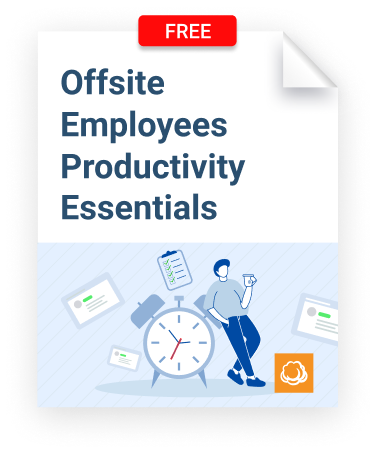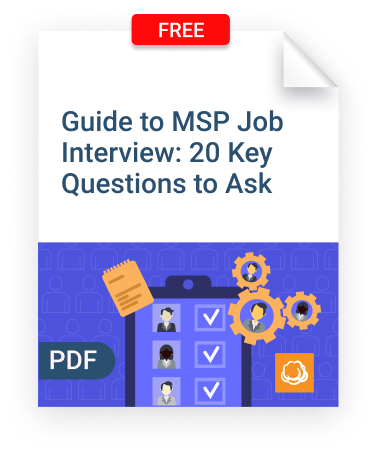MSP Business
Guide to Efficient Employee Onboarding for MSPs
When you’re hiring a new employee, it can be easy to treat the onboarding process as an afterthought. You spend so much time conducting the job search, running interviews, and selecting a candidate that you pay little heed to what has to happen after an applicant receives and accepts a job offer: onboarding.
Nonetheless, like the rest of the hiring process, onboarding should be carefully planned out ahead of time, not only to make your new hire feel welcomed into the company but also to ensure that you don’t fail to communicate all of the information that the new employee needs in order to excel in the position and deliver maximum value to your company as soon as possible. (To get proven onboarding techniques for a tech specialist, check out the article about technician onboarding processes.)
Breakdown of the onboarding process
Onboarding is a multi-stage process that takes place over a fairly long period of time -- typically, several months. It starts before the new hire arrives and doesn’t end until he or she has settled successfully into the role.
The following is a breakdown of the major stages of onboarding, and what MSPs should think about at each one.
Before the new hire’s first day
Before your new hire ever arrives for his or her first day of work, you should systematically prepare all of the information and resources that the employee will need in order to be able to begin working immediately.
One step toward this goal is to prepare a description of workplace procedures and expectations (such as whether employees need to sign in or arrive at a specific time each day, what the dress code is, and so on) and send it to the employee for review before the start date. Since this information typically applies to every new hire, consider recording it in a handbook that you can share whenever you onboard an employee.
You’ll also need to prepare paperwork for the new hire to sign. For an MSP business, this usually includes an employment agreement, a statement of work to describe the employee’s responsibilities, a non-disclosure agreement, and possibly an agreement regarding the use of company resources (to specify what employees are and are not allowed to do on company computers, and so on).
Further reading Guide to MSP Internal Documentation: Principles and Practices
You should prepare the employee’s workplace, too. Have a laptop or PC, headset, and any other relevant materials available, so that the employee can get to work as soon as he or she walks in the door. Remember, too, to provide the software that the employee will need by creating accounts, giving the employee access permissions, and so on, depending on the specifics of the software he or she will use.
Further reading MSP Software and Hardware Tools
Finally, it is often helpful to prepare a checklist that identifies onboarding tasks the new hire should complete by the first week, the second week, the third week, and so on. For example, your list might specify that the employee should finish setting up his or her computer by the end of the first week and should make introductory calls to the clients he or she will be working with by the end of the first month. Putting these expectations in writing and supplying them to the new hire on the first day of work will help to make the process of adjusting to the new role easier.
First month on the job
Once the employee starts, the first month or so should be focused on acquainting the hire with company policies and the basic tasks that he or she will need to perform. Training in the applications that the employee will use typically consumes a large part of this period, as does shadowing other employees and making contacts in different departments.
Second month
The second month is usually when a new hire starts performing real-world tasks on his or her own. The employee should know your performance goals and KPIs by this point, although you shouldn’t expect him or her to achieve all of them.
Essentially, think of the second month as a trial run. The employee should by this point be able to execute all of his or her normal job responsibilities, but hiccups and setbacks are to be expected. The point of this phase of the onboarding process is to identify and overcome any overlooked obstacles that must be addressed before the employee can really excel.
Third month
By the third month, the employee should be capable of flying solo and performing complex responsibilities on his or her own -- or seeking out solutions independently when problems arise. There may still be some additional training required or new types of tasks to perform, but learning and testing new responsibilities should no longer be the main focus.
By the end of the third month, you should also be ready to perform the new employee’s first quarterly review. During the review, you’ll assess whether the employee has met performance KPIs, and determine whether there is anything else he or she needs in order to complete the process of settling into the role.
Onboarding remote employees
The above guidance applies to employees who will work locally with your team. If you are an MSP with remote employees, there are some additional steps to address:
Provide the employee with any hardware he or she needs. Ship it preconfigured with the applications that the employee will require, or make sure he or she is able to install them independently.
Make sure the employee has access to your network and remote management tools from day one.
Set clear expectations regarding how the employee will engage with you and your team. Will you have regularly scheduled videoconferences? When and how should the employee contact you if issues arise on the job (do you prefer email, Slack, a phone call or something else)? When discussing communication plans, be sure to factor in time-zone differences, as well as any applicable accessibility requirements that could make it difficult for the employee to use certain communication tools.
Tailor performance KPIs for remote-work situations. Although, in general, you can use the same KPIs for remote employees as you do for local ones, certain KPIs (such as time spent performing certain tasks) may be more difficult to measure for remote employees.

Conclusion
After you’ve invested so much time in finding a new employee, you want to make sure that he or she can get to work as quickly and smoothly as possible. An efficient, systematic onboarding process helps to achieve this goal by making expectations clear and ensuring that the employee has all of the necessary resources to do the job from day one.
This doesn’t mean there won’t be a transition period, of course -- there will -- but a well-planned onboarding process minimizes the risk of disruptions and makes the experience as pleasant as possible for you and your new employee alike.



